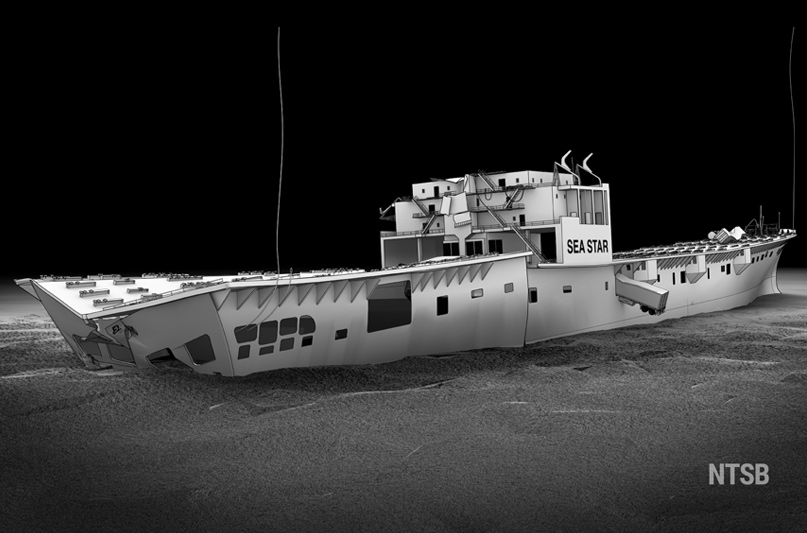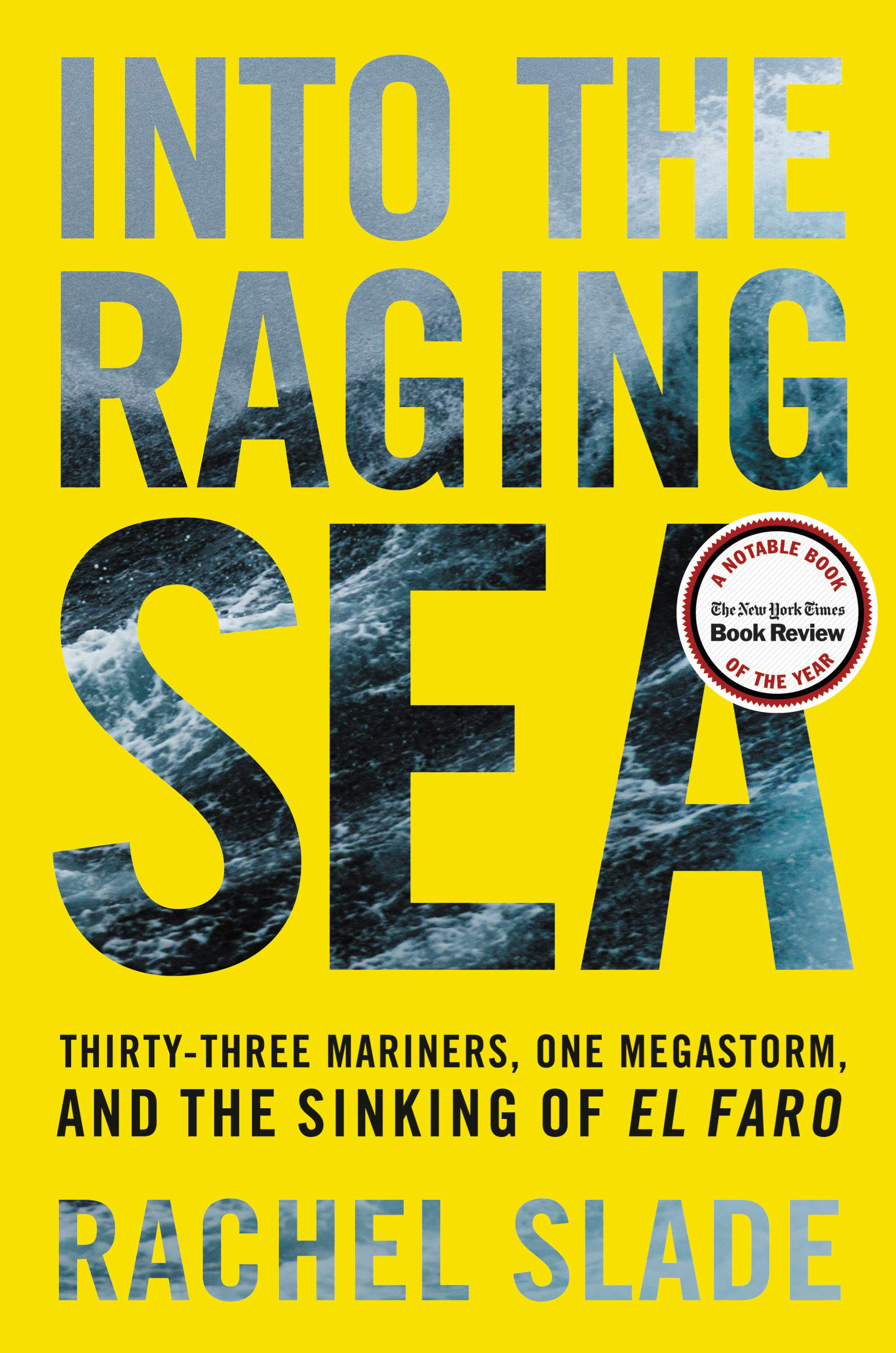
When a book about the sinking of a cargo ship begins by telling us that part of the reason officials knew it had sunk was that seismologists heard it hit the ocean floor, I’m in. This is precisely what happened when the El Faro, a 790-foot cargo ship operated by TOTE Maritime, went down just north of the Bahamas in 2015.
Rachel Slade’s Into the Raging Sea is the most remarkable marine disaster book I’ve read since Sebastian Junger blessed us with The Perfect Storm. Anyone who followed the sinking of the El Faro in October of 2015 can be forgiven for writing it off as a fluke, a poorly predicted megastorm, and a few bad decisions by the captain and crew. This, after all, was what the U.S. Coast Guard report essentially said.
It seems obvious, and the National Transportation Safety Board’s report seems to back this up, that the El Faro went down because the captain relied on old weather data and sailed straight into Hurricane Joaquin, dooming it and its 33 crewmen to the bottom of the sea. (Read the NTSB’s report here: https://bit.ly/2rWzpMn)
Slade takes us well behind the scenes of this accident, however, and shows us just how complicated these things are once we get beyond the obvious. Along the way she teaches us how primitive so much of maritime shipping still is, despite massive advances in technology. Sometimes, as the author points out, it is a sequence of small, seemingly inconsequential decisions that cause catastrophe, not one big decision.

The conclusions she reaches are too rich to spoil here, but trust me that this is a book that will not disappoint you as it weaves its tale of compounding catastrophe. Unlike other books, including The Perfect Storm, wherein authors have had to carefully reconstruct events based on a sort of “best guess” strategy, Slade had access to the 26 hours of conversations on the bridge of the El Faro leading up to her sinking. It is a remarkable treasure for an investigative writer to have this information, the transcript of which is over 500 pages long. Slade does a masterful job of weaving this transcript into a larger tale about the sinking, the crew, the company, and everyone even tangentially involved.
The reader feels the calm in the early hours of the trip, as the ship leaves Jacksonville, Florida, under the command of a local pilot. The decisions the crew make seem reasonable and measured. Even though we know the sailing is doomed, there is little to indicate that anyone onboard had the same sense.
Yes, the actions of the apparently overmatched and ill-informed captain led to the ultimate sinking of the El Faro, but why he made such poor decisions—including steaming straight into the middle of a hurricane—only comes clear through Slade’s investigative work. Was the ship old and out of date? Yes. Were poor routing decisions made? Yes. But the rest of what contributed to the sinking is a cautionary tale for the competitive, budget-constrained business of moving cargo on our waterways.
I often sit on the beach near our Whidbey Island property and watch as container ships come and go through Admiralty Inlet. These massive ships stacked tall with containers full of consumer goods destined for Seattle and Tacoma are marvels of engineering. It is impossible to imagine them being anything but slowly moving islands on the ocean, unperturbed by waves and weather. But, it turns out, they are just as vulnerable to the sea as we are, and all it takes is a few mistakes by the human crew to put them directly in harm’s way.
The end of the story is that the El Faro went down in 15,000 feet of water. As Slade says, “The American government’s network of hydrophones in the Atlantic Ocean picked up an enormous thud just beyond Crooked Island in the Bahamas.” It is the sign of a good book that knowing the ending doesn’t ruin the experience. This is such a good book that I cannot recommend it strongly enough.